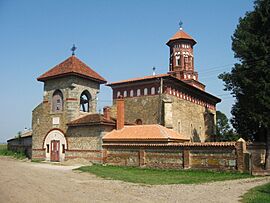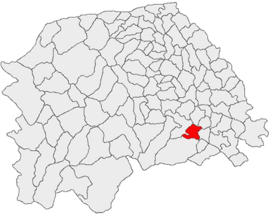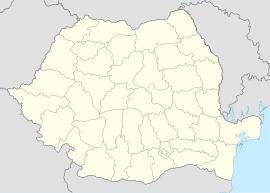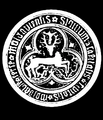Baia facts for kids
Quick facts for kids
Baia
|
||
|---|---|---|

The White church (Romanian: Biserica albă) in Baia
|
||
|
||

Location in Suceava County
|
||
| Country | ||
| County | Suceava | |
| Population
(2011)
|
Lua error in Module:Wd at line 1,575: attempt to index field 'wikibase' (a nil value). | |
| Time zone | EET/EEST (UTC+2/+3) | |
Baia is a small town, also called a commune, in northeastern Romania. It is located in Suceava County, in the historical region of Western Moldavia. Baia sits right by the Moldova River.
This town was one of the very first urban settlements in Moldavia. Today, Baia is made up of two villages: Baia and Bogata.
Contents
What Does the Name Baia Mean?
The name "Baia" comes from the Romanian word baia, which means "mine". The Hungarian word bánya also means "mine".
Archaeologists have found old signs of iron and coal mining here. This mining happened for a short time before the 1300s.
Another idea is that the name comes from "Bania". This word refers to a "Ban", who was a political leader. Baia was first mentioned in an old record called the Nestor chronicle as "Bania".
The town was also called Târgul Moldovei. This means "the market of Moldavia", because it was near the Moldova River. Its Hungarian name was Moldvabánya, meaning "the Moldova mine". An old city seal even had a Latin name for it: Civitas Moldaviae.
The History of Baia
People have lived in Baia since the 1200s. The first written record of the town appeared in the 1300s.
Some historians think a document from Poland in 1335 mentions Baia. It talks about a merchant named "Alexa Moldaowicz," meaning "Alexa from the Town of Moldavia." Baia was also listed in 1345 among towns with Franciscan missionaries.
Early Moldavian Capital
Around 1345-1347, the army of King Louis I of Hungary marched through Baia. Archaeologists found signs of a big fire from the mid-1300s. This fire might have happened during this conquest.
Old Moldavian records say Baia was the first capital of Moldavia. However, it was only a temporary capital. The main court soon moved to Siret. By the time Bogdan I of Moldavia ruled, Baia was no longer even a county seat.
Settlers and Town Life
After the Hungarian conquest, new settlers came to Baia from Transylvania. These settlers helped the town grow and become more organized. A writer named Grigore Ureche said that "German potters" founded the market in Baia.
The new settlers built a wooden church and a central marketplace. Houses were built around this market. By the year 1400, people in Baia lived much like those in other towns in Transylvania. Their homes had special stoves for heating, and the streets were paved with river stones.
The town was protected by a wooden fence, called a palisade. This fence was burned down in 1467.
Town Leaders
We don't know exactly what groups of people lived in Baia. But some documents from the 1400s mention "Saxons in Baia."
The town's leaders, called pârgari, owned the mills together. This was different from other Moldavian towns, where mills were privately owned. The pârgari (local council) and șoltuzes (mayors) were first chosen from the German settlers.
Over time, this changed. By 1586, only half of the pârgari had German or Hungarian names. The other half, including the șoltuz, had Romanian names.
The Battle of Baia
In 1467, King Matthias Corvinus of Hungary started a military trip against Ștefan the Great. Ștefan had taken over a Hungarian fort called Kilia.
During Matthias's trip, his armies burned down several Moldavian towns. But he did not burn Baia. Instead, he stayed in a strong stone house in the center of Baia.
However, Ștefan cel Mare attacked Baia. He burned the town on the night of December 15, 1467. This attack happened just before the famous Battle of Baia.
Decline of the Town
Baia started to become less important after the 1500s. The town of Suceava grew and became more important for trade.
Eventually, Baia lost its status as a major town. It went back to being a simple village, which it is today.
Images for kids
-
Ruins of the early 15th century Roman Catholic cathedral, built by the Transylvanian Saxon settlers.
See also
 In Spanish: Baia para niños
In Spanish: Baia para niños





